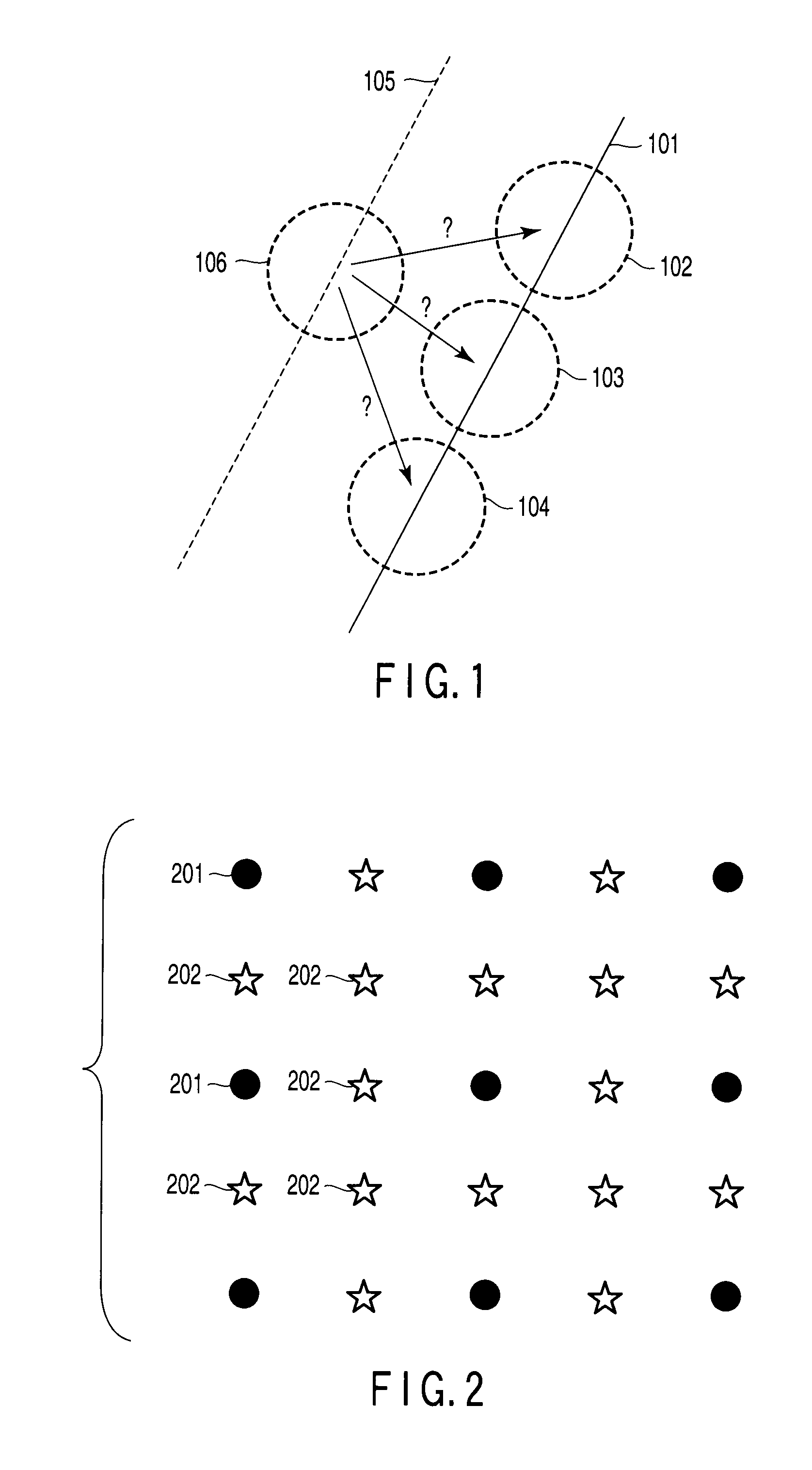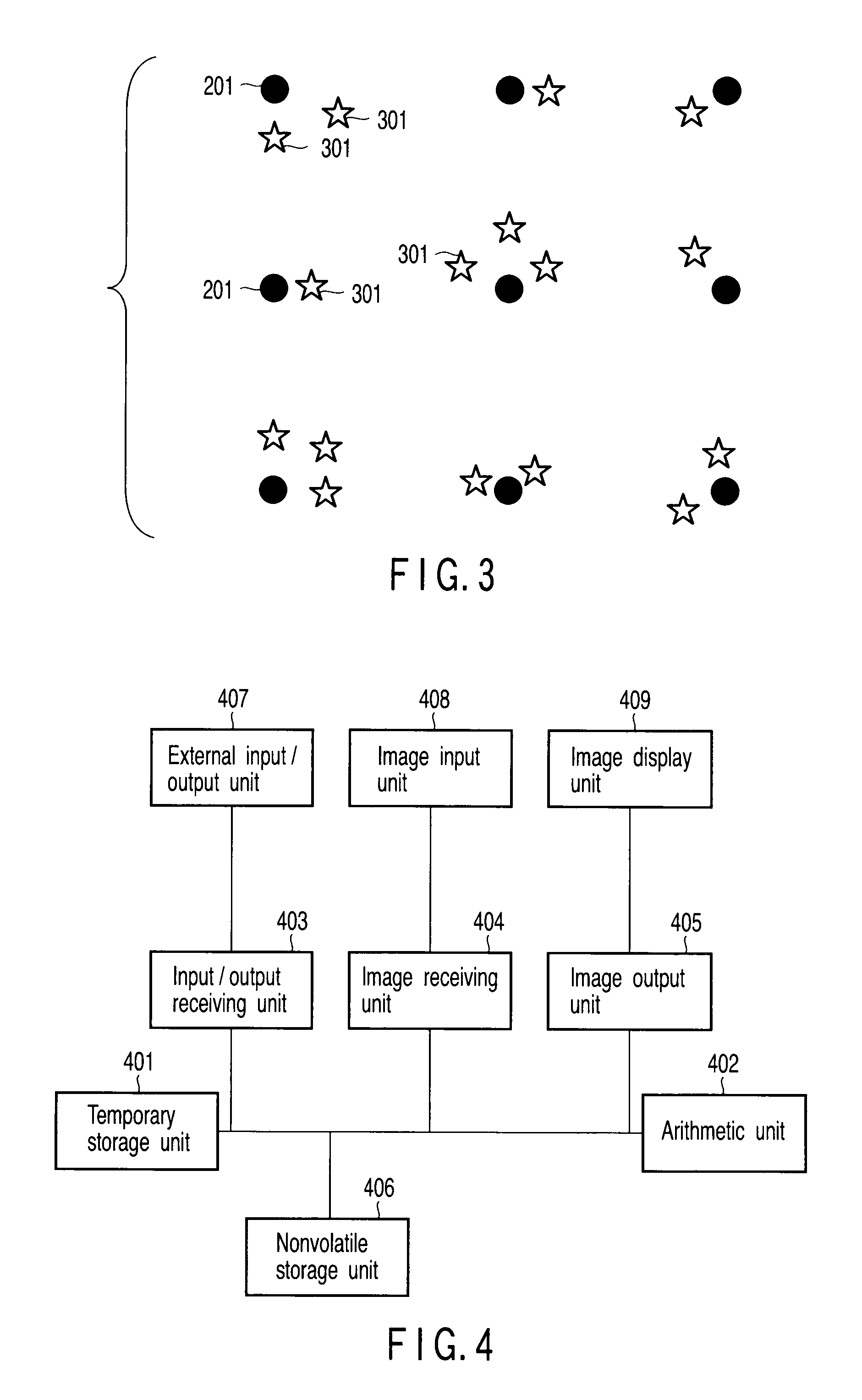Image processing apparatus, method, and program
a technology of image processing and motion vector, applied in the direction of color signal processing circuits, instruments, television systems, etc., can solve the problems of no expected image obtained by image reconstruction, high-resolution image degrade, and sharpness not largely improved when image reconstruction is performed
- Summary
- Abstract
- Description
- Claims
- Application Information
AI Technical Summary
Benefits of technology
Problems solved by technology
Method used
Image
Examples
example 1
Block Matching SSD
[0106]A method will be examined, in which using an Lα error as a block error function, which is given by
Dα=∑(p,q)∈blockI(p,q,t)-I(p+Δp,q+Δq,t+Δt)α(whereαisarealnumber)(36)
or a robust error using a robust function ρ, which is given by
Dρ=∑(p,q)∈blockρ(I(p,q,t)-I(p+Δp,q+Δq,t+Δt))(37)
a position where the error value (the value of the Lα error or robust error) is minimized is obtained by block matching, and the shift of fractional accuracy is obtained by function fitting. Note that SSD and SAD correspond to Lα errors when α=2, and α=1, respectively. As the robust function ρ, for example, Huber's robust function given by
ρ(u)={u2u≤c2cu-c2u>c(38)
is used. A function obtained by setting an upper limit for, e.g., a SAD function, as is given by
ρ(u)={uu≤ccu>c(39)
is also usable. As the robust function ρ, a function described in C. V. Stewart, “Robust Parameter Estimation in Computer Vision”, SIAM Review, Vol. 41, No. 3, pp. 513-537 may be used. A multidimensional color spa...
example 2
Lucas-Kanade Method
[0131]The Lucas-Kanade method obtains a position to minimize the following expression, assuming two corresponding pixels (x,y,t) and (x+Δx,y+Δy,t+Δt) between frames. Note that weighting coefficients can be applied to errors at the pixels in a block to, e.g., place importance on the center. The presence / absence of weights does not largely change the calculation method (necessary weights can be applied), and a description thereof will be omitted below.
E=∑block(I(x+Δx,y+Δy,t+Δt)-I(x,y,t))2(42)
[0132]A linear Taylor expansion is applied to Expression (42). The expression to be minimized for the pixel (x,y,t) is a local energy function to be described below, in which u (=Δx / Δt) and v (=Δy / Δt) represent the horizontal and vertical speeds, respectively.
E=∑(∂I∂xu+∂I∂yv+∂I∂t)2(43)
where Σ is the sum for each pixel in the block. The expression can be minimized by calculating the least-square solution. This method has no bias to a specific subpixel positional shift and cannot ...
example 3
[0136]As a further method of obtaining a motion, a method of optimizing the consistency of individual motions and the balance of smoothness of motion vectors in the entire screen is known, like the Horn-Schunck method. This method (global motion optimization) can be formulated as a problem of (approximately) minimizing, e.g., the following energy function.
E=∑ρ1(∂I∂xu+∂I∂yv+∂I∂t)+λ∑ρ2((∂u∂x)2+(∂v∂x)2)(45)
This expression is similar to that of the Lucas-Kanade method. However, this energy function is given as one function not for each pixel but for the entire image. Each Σ represents the sum for all pixels of a frame as a motion calculation target, and λ represents a separately defined weight coefficient. Two values ρ can be either an Lα error or a robust error (they need not be the same function). Formulation by Horn et al. corresponds to use of SSD as the two values ρ. The former term evaluates the consistency of individual motions (whether the luminance error can ...
PUM
 Login to View More
Login to View More Abstract
Description
Claims
Application Information
 Login to View More
Login to View More - R&D
- Intellectual Property
- Life Sciences
- Materials
- Tech Scout
- Unparalleled Data Quality
- Higher Quality Content
- 60% Fewer Hallucinations
Browse by: Latest US Patents, China's latest patents, Technical Efficacy Thesaurus, Application Domain, Technology Topic, Popular Technical Reports.
© 2025 PatSnap. All rights reserved.Legal|Privacy policy|Modern Slavery Act Transparency Statement|Sitemap|About US| Contact US: help@patsnap.com



